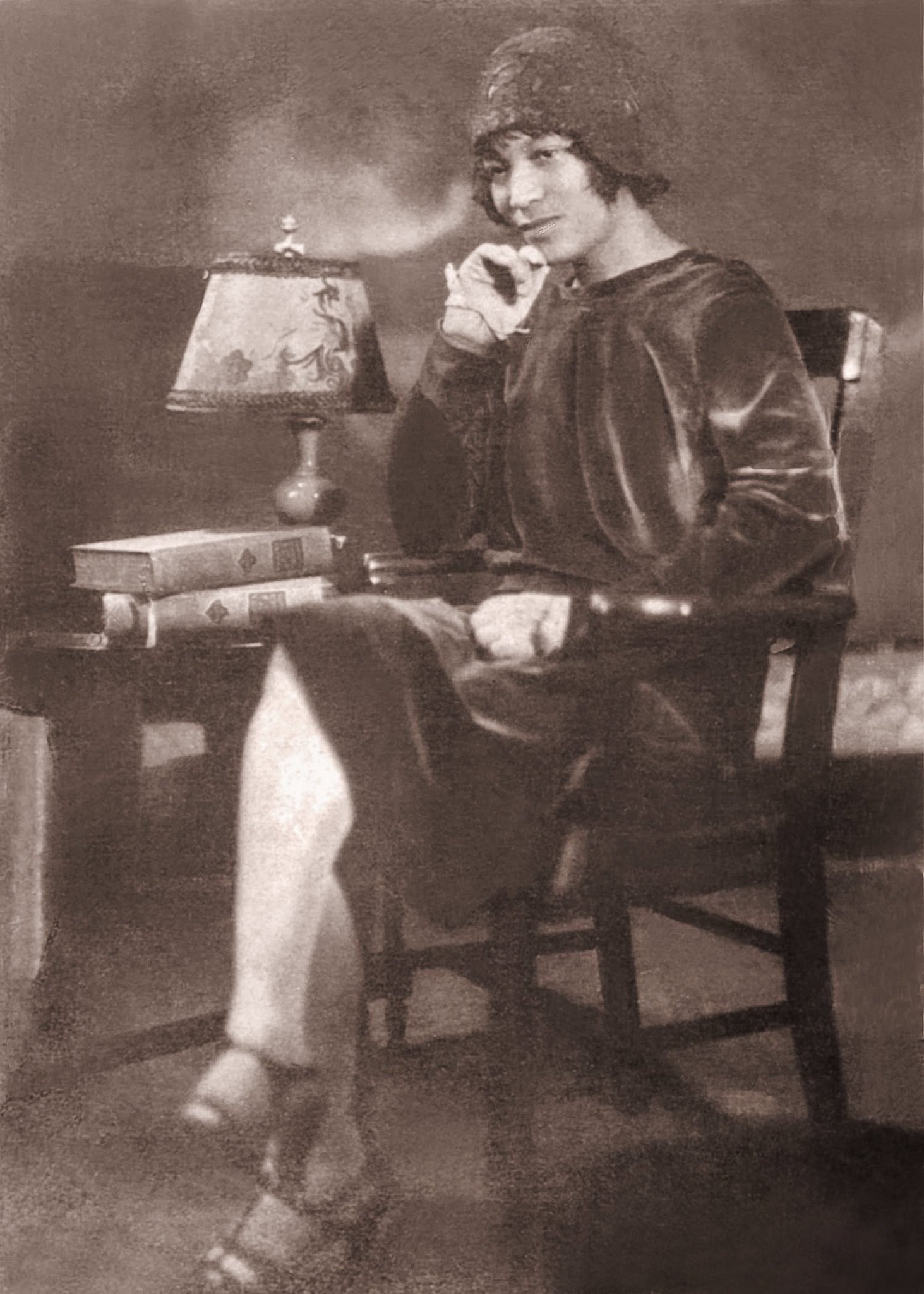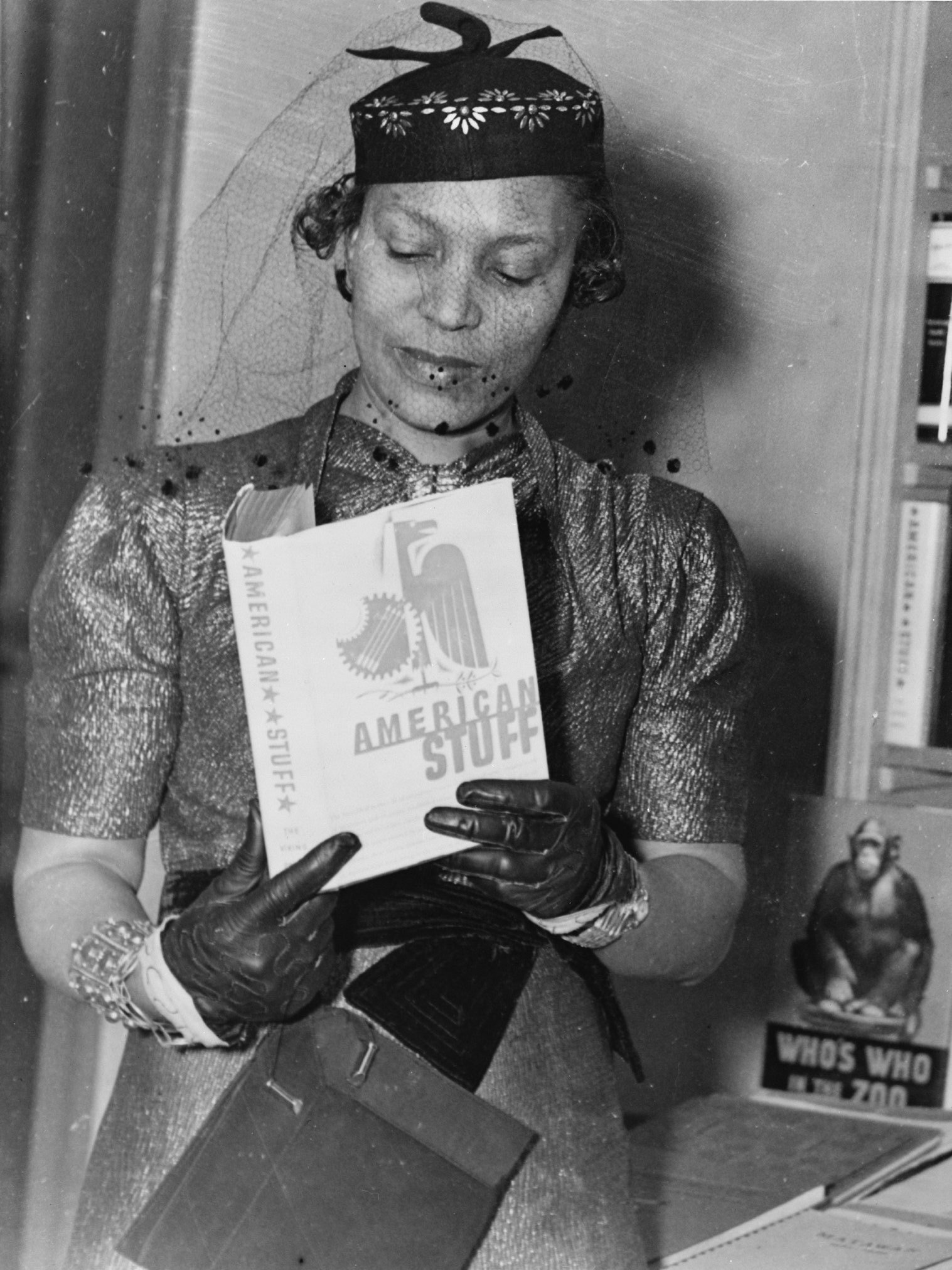Your Way.
“I have the nerve to walk my own way, however hard, in my search for reality, rather than climb upon the rattling wagon of wishful illusion.”
- Zora Neale Hurston
Zora Neale Hurston was a prolific writer, skilled folklorist, and anthropologist. She was Born in Notasulga, Alabama on January 7, 1891, soon after she was born her parents moved their family to Eatonville, Florida (the first incorporated and self- governing all- Black town). Zora described Eatonville as “a city of five lakes, three croquet courts, three hundred brown skins, three hundred good swimmers, plenty guavas, two schools, and no jailhouse.” In Eatonville Zora’s family flourished. Living in an all Black town Zora was sheltered from racism, however, her life was a different story. Her mother taught her to read at a young age, and encouraged her to “jump at de sun” She would say “We might not land on the sun, but at least we would get off the ground.” Her father squinched at her rambunctious spirit, and routinely smacked her down, and warned her to stop “acting white.”
“I had a way of life inside me and I wanted it with a want that was twisting me.”
When Zora was 13yrs old her life was turned upside down. Her mother passed away, and her father quickly remarried. When Zora didn’t get along with her new stepmother, she was sent away to live with different relatives. She went to live with her sister in Jacksonville, Florida. It was in Jacksonville that she learned that she was “a little colored girl.” Zora’s brother, now a practicing physician invited her to come and live with his family in Nashville, Tennessee, where she could care for his children. When her brother didn’t encourage her to go to school Zora ran away. She worked as a maid, waitress, and manicurist to support herself. In 1917 a 26 yr old Zora was living in Baltimore, Maryland, and she still hadn’t finished high school. She decided to take ten years off her age, and presented herself as 16yrs old, this way she would qualify for free public school.
“Sometimes, I feel discriminated against, but it does not make me angry. It merely astonishes me. How can any deny themselves the pleasure of my company? It’s beyond me.”
A year later Zora graduated from high school and went on to attend Howard University. “Hurston’s talent was readily apparent to her professors Alain Locke and Montgomery Gregory. With Locke’s and Gregory’s support her short story “John Redding Goes to Sea” qualified her to become a member of Alain Locke’s literary club, where she met other young Black writers known as “New Negroes” Jean Toomer, Bruce Nugent, Alice Dunbad- Nelson, and Jessie Fauset. They would become the next generation of the Harem Renaissance. Zora continued writing and won many awards, and a scholarship to Barnard College where she studied anthropology with Franz Boas (the father of modern anthropology). She received a fellowship to collect oral histories and folklore in her home state. She also studied voodoo in Haiti. Zora received her B.A. in 1928.
“Research is formalized curiosity. It is poking and prying with a purpose. ”
In 1931, she collaborated with Langston Hughes on the play Mule Bone. Her first novel, Jonah’s Gourd Vine, was published in 1934. In 1935 Mules and Men, a collection of material from her research in oral folklore, was published. Next came her most famous work, and one of my favorite books that taught me about love, loving myself, and knowing that I too deserve love. As much as this book meant to me and so many others, it was not well received at the time it was written. “Hurston was at the height of her powers in 1937, when she first fell seriously out of step with the times. She had written a love story.” Their Eyes Were Watching God is “a story about a Black woman looking for love and happiness in the south. The book was criticized at the time, especially by Black male writers, who condemned Hurston for not taking a political stand and demonstrating the ill effect of racism. Instead, the novel, now considered her masterwork, celebrated the rich tradition of the rural Black South. Hurston’s work remained uplifting and joyful despite her financial struggles.” She was judged superficial for depicting an all - Black, Southern, small- town world much like her hometown Eatonville, in which blacks enjoyed their own “rich cultural traditions, and were able to assume responsibility for their own lives.”
“Love makes your soul crawl out from its hiding place.”
In the late 1930’s Zora uncovered the story of the last survivor of the last slave ship, a man named Oluale Kossula. Kossula was his African name, his American name was Cudjo Lewis. When Zora met Kossula, she told him that she wanted to tell his story, and she called him by his African name, this it brought him to tears. Through his tears he rejoiced “Thankee Jesus! Somebody come ast about Cudjo! I want tellee somebody who I is, so maybe dey go in de Afficky soil some day and callee my name and somebody dere say, ‘Yeah, I know Kossula.’” Zora told Kossula’s story in his dialect. The same prominent Black authors that criticized Their Eyes Were Watching God argued that Kossula’s story “played to black caricatures in the minds of white people.” Publishers turned down her manuscript because it was written in vernacular. Zora’s book about Kossula’s life, Barracoon: The Story of the Last Black Cargo was not published until 2018. It is now a New York Times Bestseller. I read Kossula’s story at the start of the pandemic, it is one of the most beautiful stories I have ever read. His wisdom shines through every page, and his words are like poetry. He beautifully and tragically describes his life in Africa, his capture and the transatlantic slave trade, his life in servitude, and life after emancipation.
“If you are silent about your pain, they’ll kill you and say you enjoyed it. ”
Zora Neale Hurston died in poverty. Despite writing many books that are now considered masterpieces, she had to work on and off as a maid to support herself.. “In the 1970s, her work, almost forgotten, was revived by feminist and Black-studies scholars, and an anthology, I Love Myself When I Am Laughing…And Then Again When I Am Looking Mean and Impressive, was published in 1979.” There was a new interest in Zora’s life and work. She was ahead of her time. She was writing for us, and her work is an inspiration for us to never lose sight of our purpose, knowing that it is ok to do things our own way.
“I have known the joy and pain of friendship. I have served and been served. I have made some good enemies for which I am not a bit sorry. I have loved unselfishly, and I have fondled hatred with the red- hot tongs of Hell. That’s living.”
How Yoga Can Help
“Don’t think that unless you have reached the ultimate final pose then only the fruit comes. No. At every level, asana (postures) has something to offer.”
- Prashant Iyengar
In this restorative class we learn how to take support, so that you can practice your way. In this class I demonstrate different setups and modifications for restorative poses, so that each student can take the support that they need to rest, relax, and restore.
Notes on Practice:
Pose 1
1. Adho Muka Virasana (Child’s Pose) This pose helps us become present, so that we let go and move away from wherever we were, or whatever we were doing before we came to our practice. As we settle this pose gentle stretches the spine, and creates space in the ankles, knees, and hips, while also quieting the mind and calming the senses.
Poses 2- 4
2. Adho Muka Svanasana (Downward Facing Dog Pose) 3. Uttanasana (Intense Stretch Pose/ Standing Forward Bend Pose) 4. Prasarita Padottanasana (Wide Foot Pose) In these poses the legs, arms, and sides are fully stretched, while the head and neck rest on support. The intense stretch of the arms and legs ground us in the asana, and in our body. The release of the head and neck helps to quiet the mind, and calm the nerves. These poses are great alternatives to inversions, because of the head down position.
Pose 5
5. Salamba Sarvangasana or Viparita Karani (Supported Shoulderstand/ Legs Up The Wall Pose) This pose is known as “The Mother of Asanas” In Light On Yoga B.K.S. Iyengar explains “As a mother strives for harmony and happiness in the home, so this asana strives for the harmony and happiness of the human system.” Taking shoulderstand and/ or the alternartive viparita karani allow us to open the chest in this pose, this helps stretch the shoulders and neck, which stimulates the endocrine system, which is the hormonal system. Overall these poses calm the brain, and help relieve stress.
Poses 6- 7
6. Setu Bandha Sarvangasana (Bridge Pose) 7. Supta Baddha Konasana (Reclined Bound Angle) These supported poses are my go to restorative/ supported poses. These poses promote deep relaxation, soothes the nervous system, and reduces heaviness in the abdomen and reproductive system.
Pose 8
8. Ujjayi Pranayama (Upward Expansive Breath) Ujjayi means upwards or expansive. Jaya means success. In this sequence we will practice Ujjayi 1, In Light On Pranayama B.K.S. Iyengar explains Ujjaryi 1 as a “preparatory stage trains one in the art of being aware of sensations in the lings; it leads to even breathing.” The deep even breaths in this practice invigorate s the nerves, and helps release hardness in the lungs.
Pose 9
9. Savasana (Corpse Pose) This pose is sometimes the hardest pose in a whole class, because it requires us to release and let go. When we allow ourselves to simply rest in this pose, we experience many of its benefits such as reducing fatigue and anxiety, and helping us make a deeper connection and awareness of our own true self.











